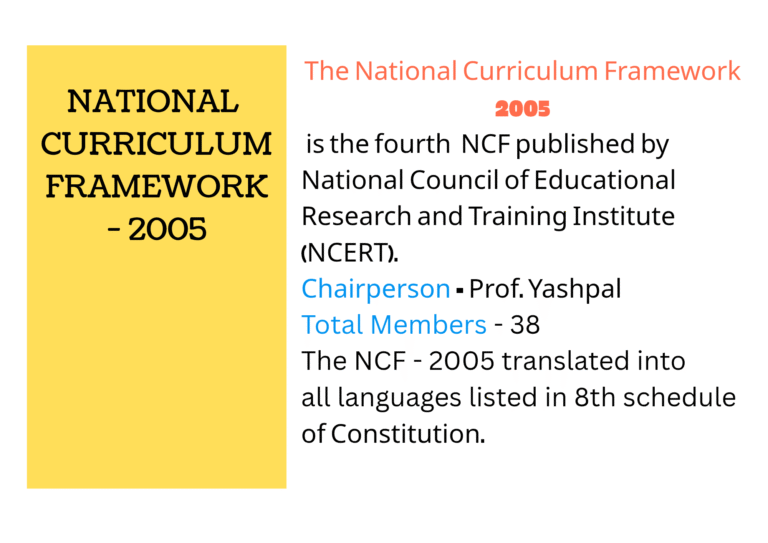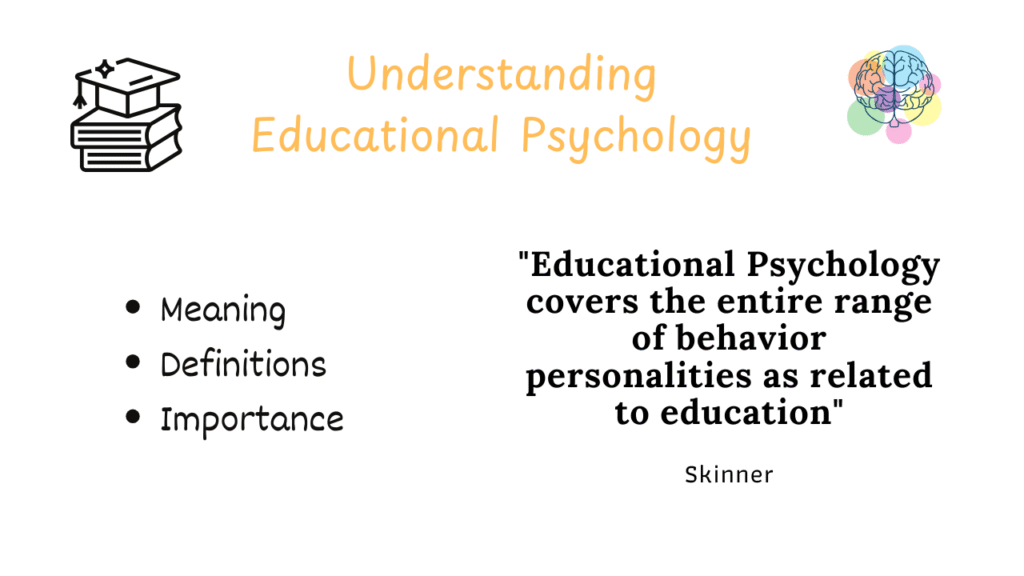National Curriculum Framework 2005 (NCF 2005) – B.Ed Notes, Summary & Key Points
The National Curriculum Framework 2005 (NCF 2005) is the fourth NCF published by the National Council of Educational Research and Training (NCERT).
It begins with an essay, a quotation from Tagore’s poem Civilization and Progress “(सभ्यता और प्रगति), in which the poet reminds us that a “Creative Spirit” and “Generous Joy” are keys in childhood.
It is translated into all languages listed in the Eighth Schedule of the Constitution.
Chairperson and Members
In 2005, under the chairmanship of Prof. Yashpal, a National Steering Committee was constituted to prepare the National Curriculum Framework.
There were 38 members in this committee.
Five Guiding Principles of NCF 2005
1. Ensuring that learning shifts from the rote learning method.
2. Examinations should be more flexible.
3. Curriculum should be beyond the textbook and flexible.
4. Applying classroom knowledge to real-life situations outside the school.
5. Nurturing an overriding identity informed by caring concerns with the democratic policy of the country.
Objectives of NCF 2005
1. Provides instruction and Suggestions regarding the Syllabus, textbooks, and teaching techniques to be followed.
2. Free and Compulsory education from 6 to 14 years of age.
3. Make education equal and provide equal opportunities for everyone.
4. Recognizing one’s Mother tongue as well as being fluent in English.
5. Promote patriotism and unity of the nation among the children.
6. Strengthening national education and promoting national progress.
The NCF 2005 stresses reducing the burden of a learner, that is, changing schools into places where children can learn joyfully, with curiosity and engagement. In this model, teachers serve as facilitators instead of just passing on information. It still guides education reforms in India by supporting quality, fairness, and overall development.


